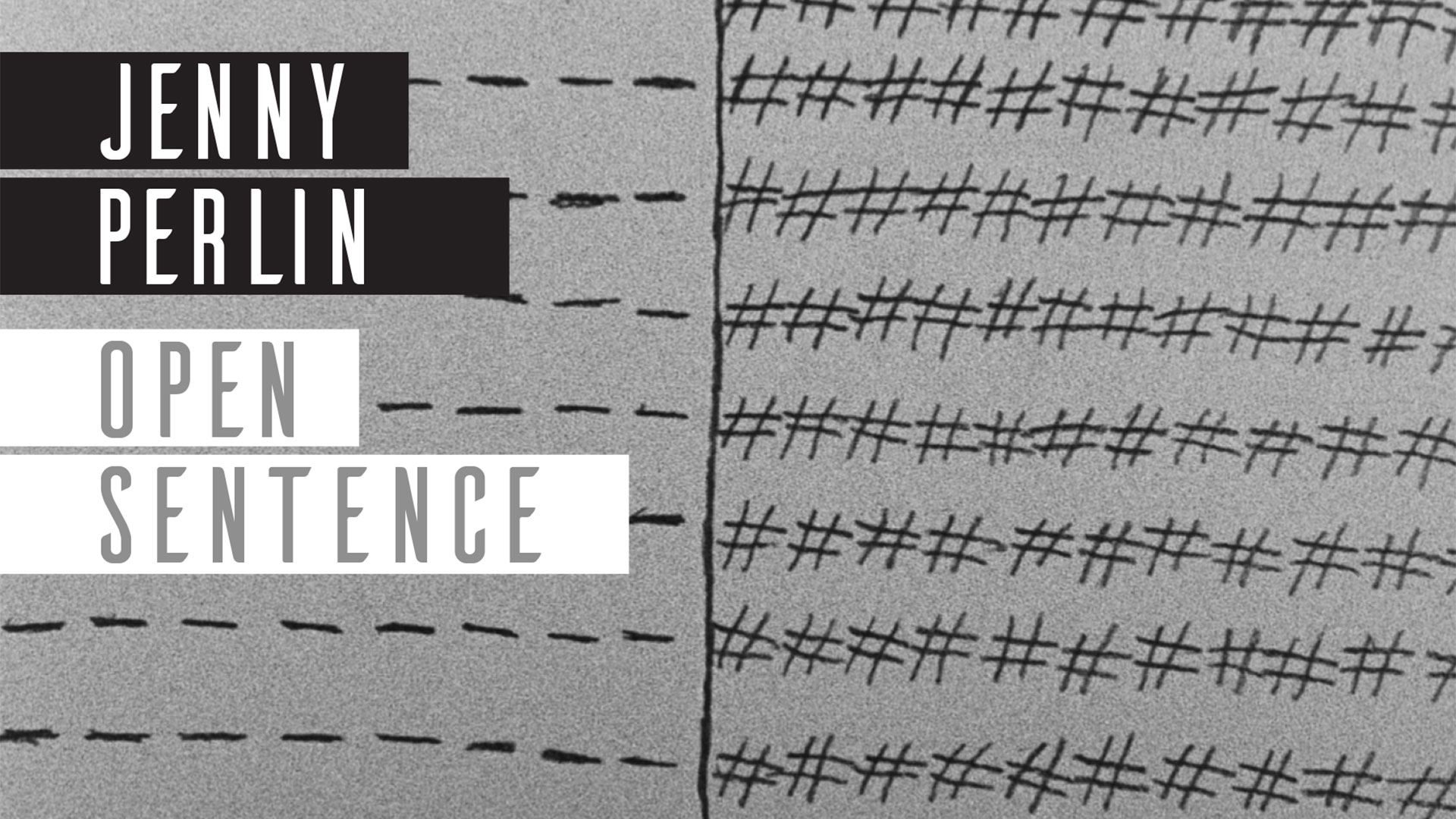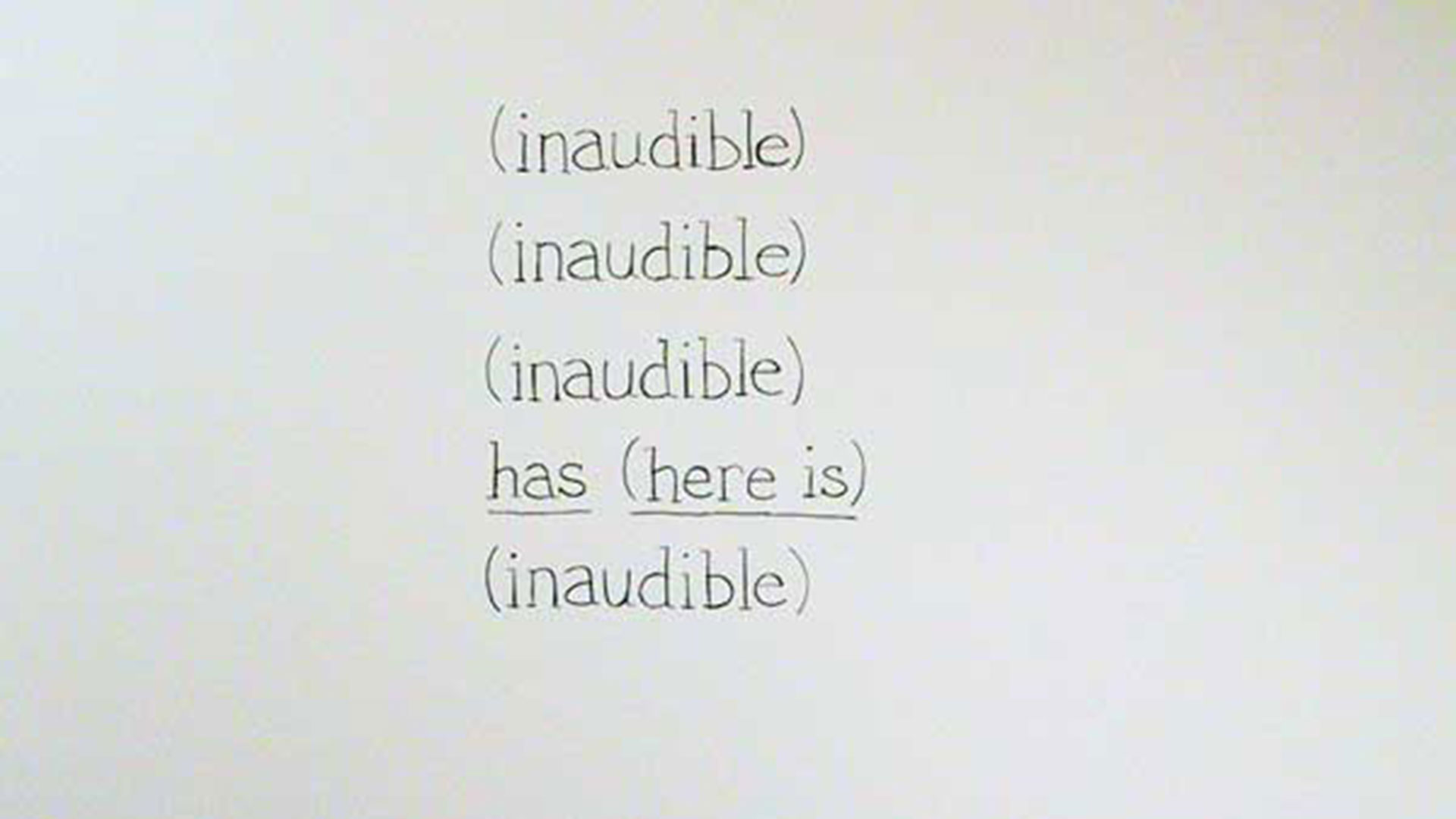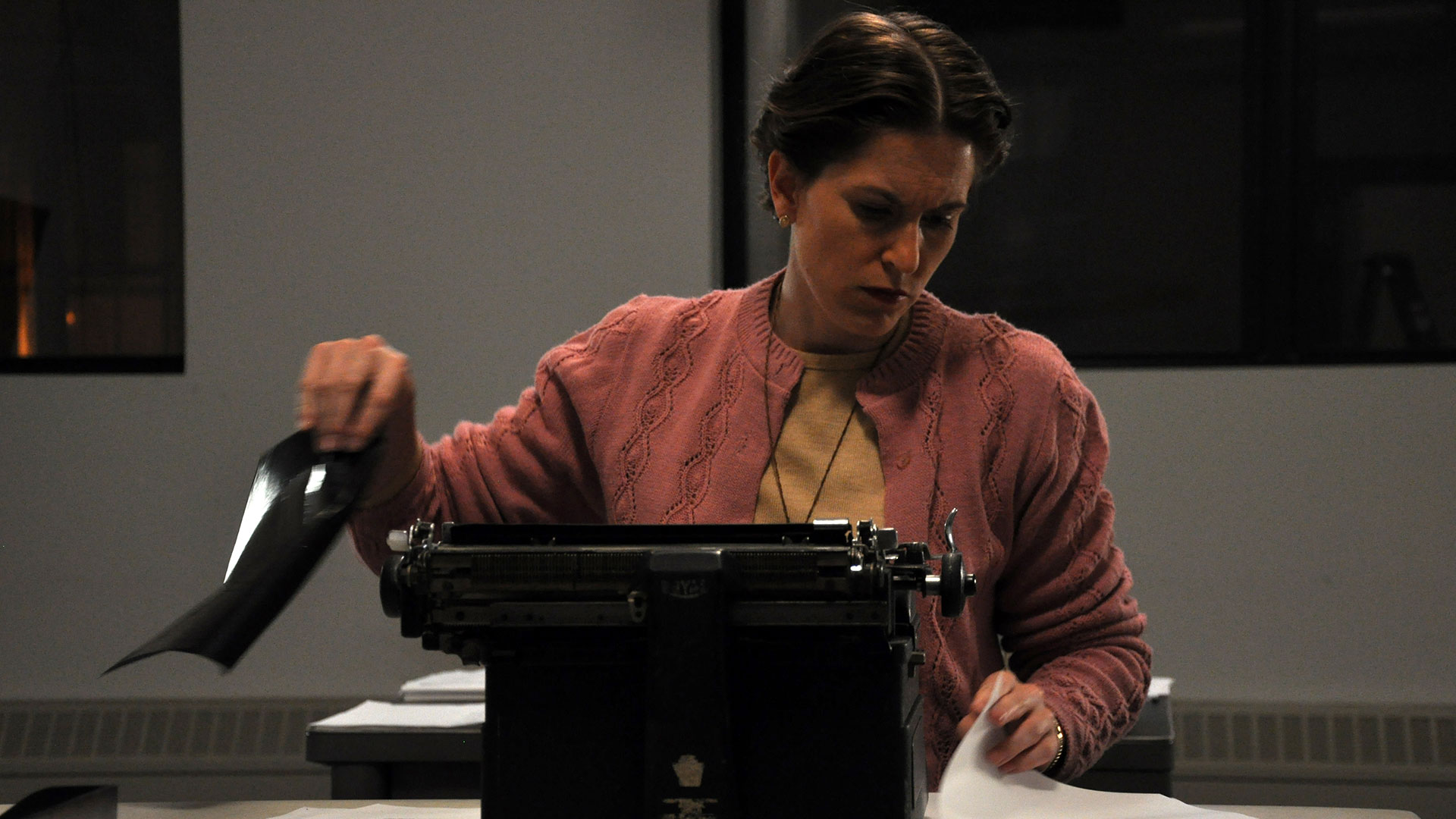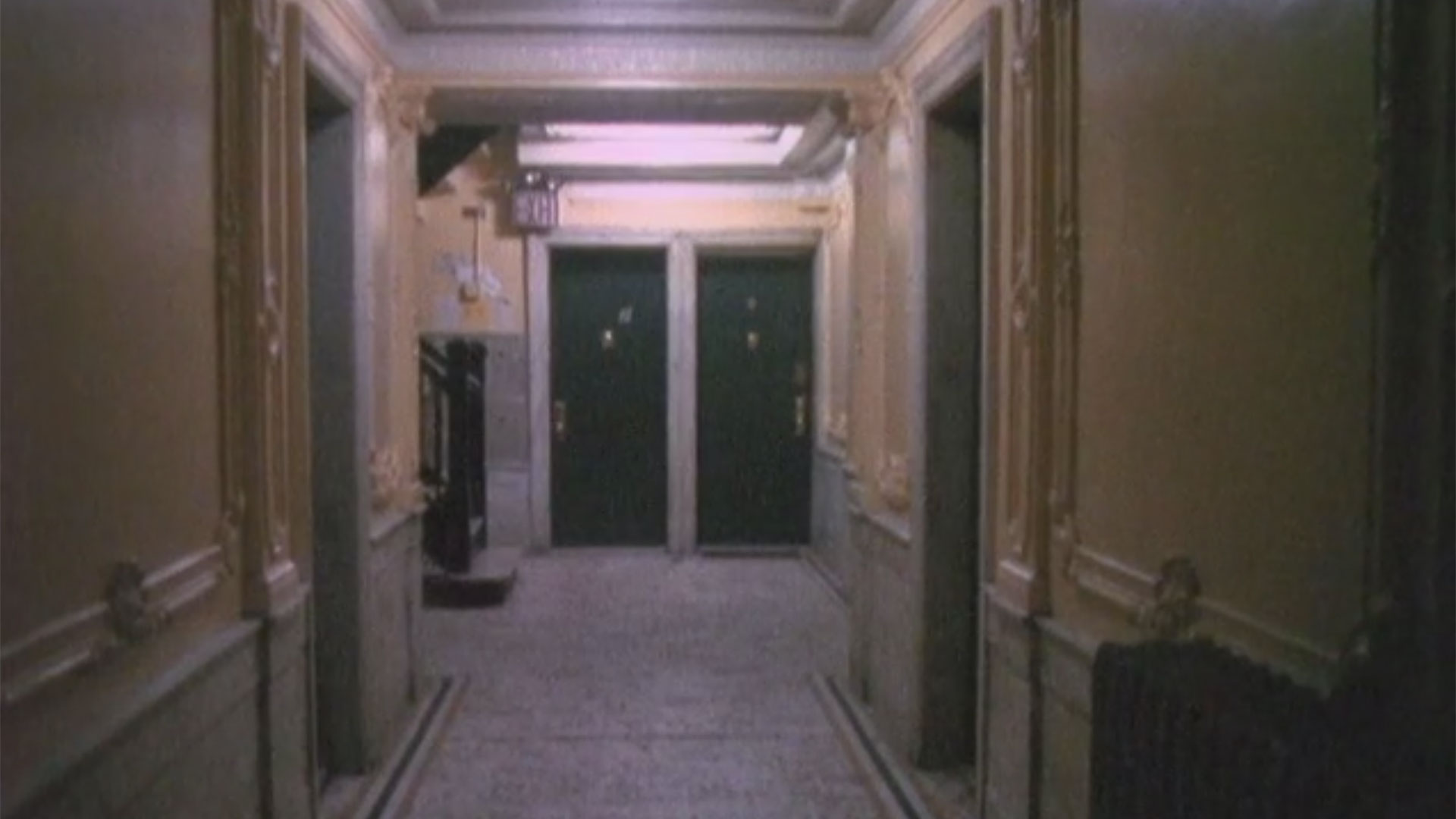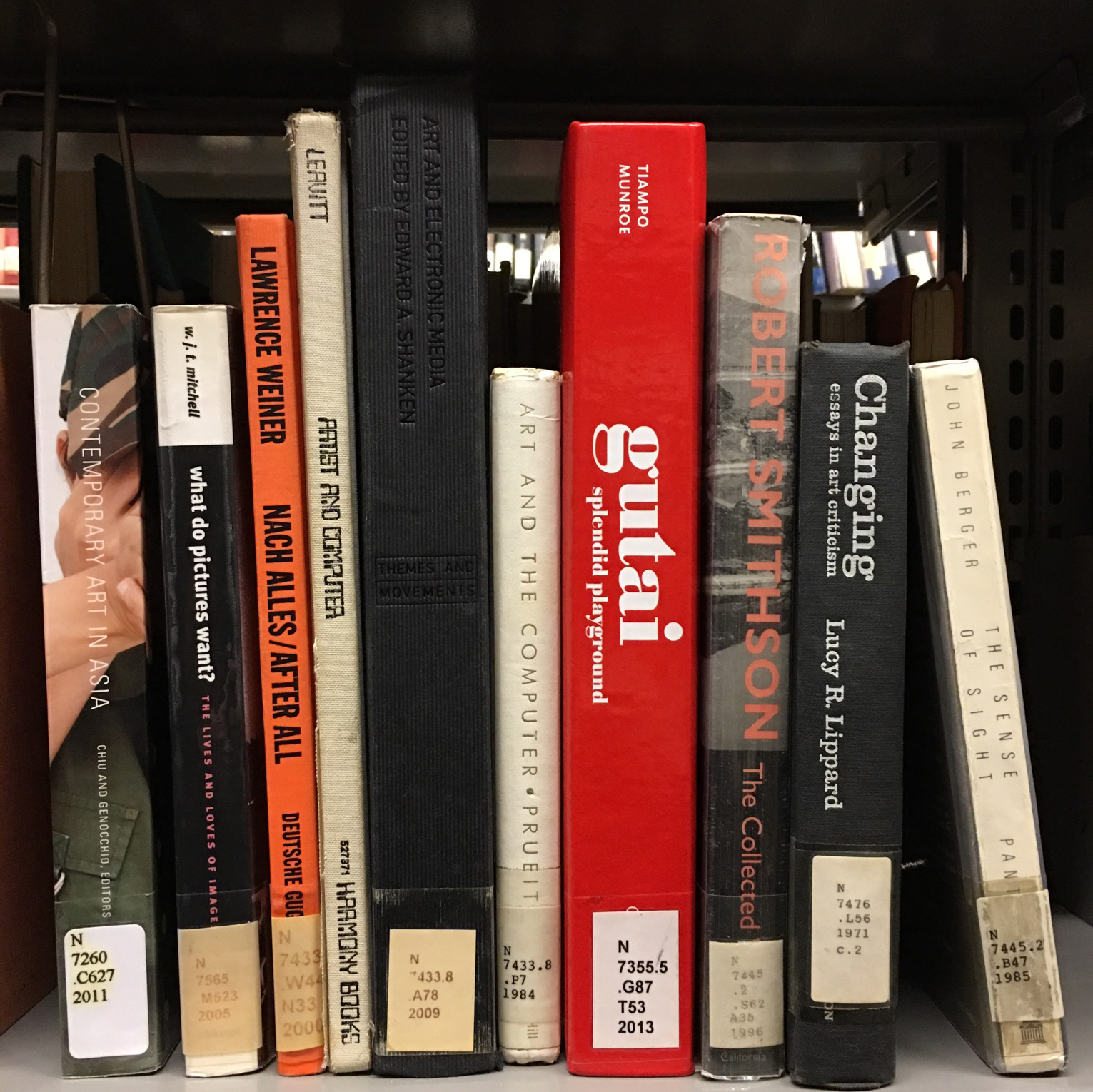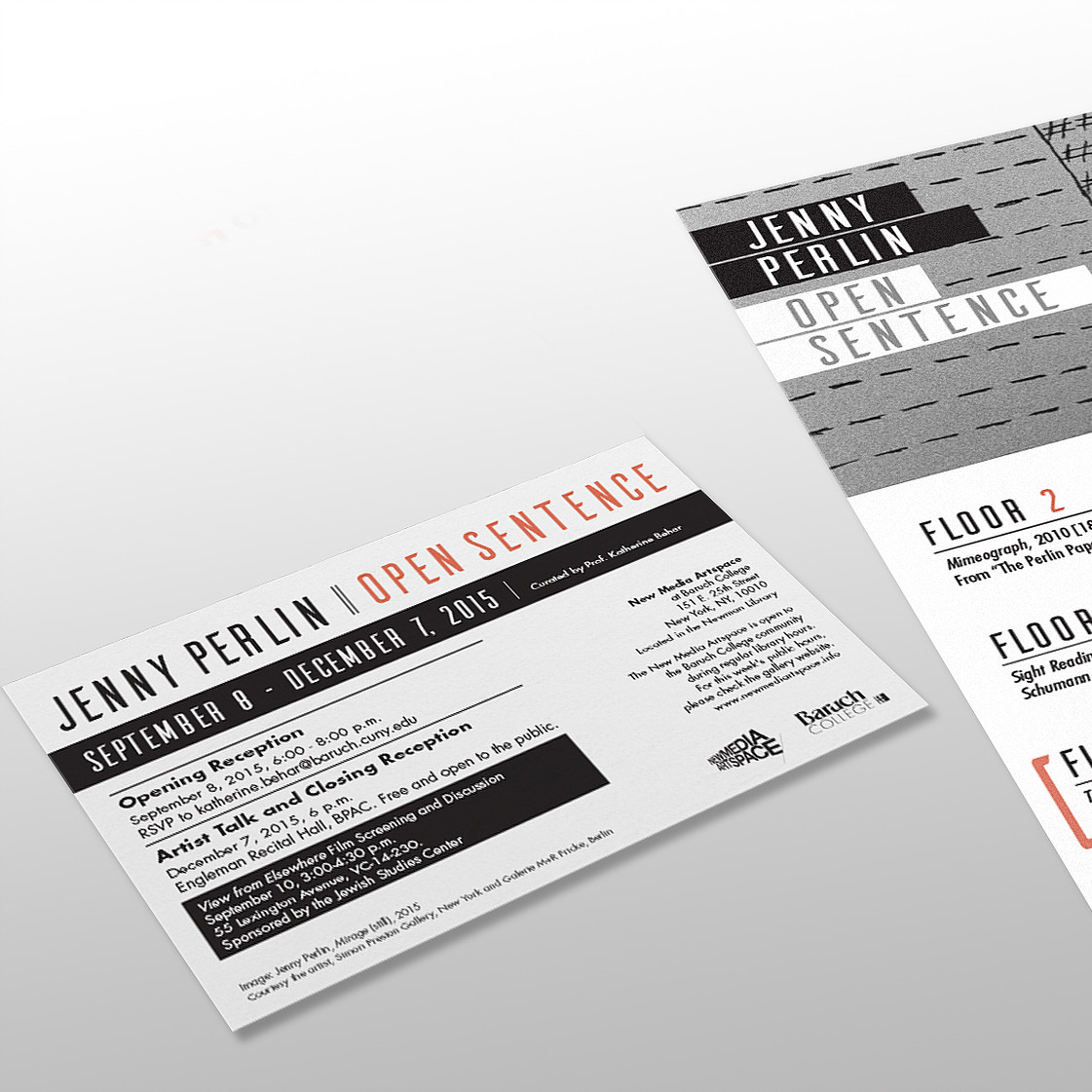Past Exhibition
Jenny Perlin: Open Sentence
September 8–December 7, 2015
Curatorial Statement
“My interest is in the ways in which the sweeping statements of history affect specific details of human experience.”
—Jenny Perlin
Jenny Perlin’s exhibition, “Open Sentence,” takes its title from a mathematical concept. A “closed sentence” is always true or always false, but an “open sentence” is a statement that contains variables or unknowns. Open sentences can be either true or false, depending on what values are used.
Throughout her artistic career, Perlin has questioned the truth-value of historical narratives. Her work shows how statements about history are also subject to variability. Like mathematical statements, historical statements can contain unknowns: political, personal, and material forces that converge to script and rescript our understanding of events in complex and simple ways. Perlin uncovers history’s shifting scripts by “reading” alternative texts, from fiction, to musical scores, to redacted FBI documents. And indeed, texts feature centrally in this exhibition, set as it is, in the Newman Library.
On the second and fourth floors, Mimeograph, Transcript, and Inaudible, three films from Perlin’s series “The Perlin Papers,” 1 show how unknown variables proliferate even in official historical documents—in this case, FBI documents surrounding the case of Julius and Ethel Rosenberg, who were tried and executed in 1953 for alleged espionage for the Soviet Union. On floor 2, in Mimeograph we witness the fallible, human production of a historical script as two typists transcribe FBI documents. Mimeograph alludes to Transcript and Inaudible on floor 4, which both derive from an audio surveillance recording. The transcript of the recording provides the script for these films, and its frequent inaudible gaps suggest historical scripts may be always incomplete.
All narratives rely on memory and interpretation, two highly contingent processes. On the third and fifth floors these processes are brought to life through Perlin's projects investigating musical performance and works of fiction. On floor 3, Sight Reading and Schumann both center on music by the composer Robert Schumann, revealing misinterpretations and slippages in scripts and scores. On floor 5, Funes elaborates on a short story by Jorge Luis Borges in which a character gains an infallible memory through an accident. For Borges, thinking requires abstraction, not the perfect fidelity that dooms the main character. Funes explores different modes of interpreting this story—drawings of its singular objects, hand copying the text in its entirety, and translating the story from Spanish to English—but each time the narrative it translated, it remains in some way inaccurate.
1. The Perlin Papers is an archive located at Columbia University Law School that contains 250,000 documents related to the case of Julius and Ethel Rosenberg, who were tried and executed in 1953 for alleged espionage for the Soviet Union. For two decades after the execution, the FBI spied on hundreds of people tangentially connected to the case. The archive is named for a distant relative of the artist, Marshall “Mike” Perlin, a lawyer who forced the U.S. government to release the papers in the early 1970s, in one of the first successful uses of the Freedom of Information Act in the U.S.
Artist Biography
Jenny Perlin makes films, videos, and drawings. Her projects draw on interdisciplinary research interests in history, cultural studies, literature and linguistics. Her films incorporate innovative techniques to investigate history as it relates to the present. Perlin shoots 16mm film and digital video and combines live-action, staged, and documentary images with hand-drawn animation.
Her films have been shown as single-channel works and multi-channel installations at numerous venues including the Museum of Modern and Contemporary Art, Rijeka, Croatia (2015), Wexner Center for the Arts, Ohio (2015), the Berlin Film Festival (2006 and 2015), Garage Center for Contemporary Art, Moscow, Russia (2015), The Scottsdale Museum of Contemporary Art, (2014), the New York Film Festival (2014), The Drawing Center, New York (2001, 2008 and 2014), The Folkwang Museum, Essen, Germany (2012), Kino Arsenal, Berlin (2012), Toronto Film Festival Free Screen (2011), Guggenheim Museum, New York (2011), Bard Center for Curatorial Studies (2011), Jewish Museum, Brussels, Belgium (2011), Migrating Forms Festival, New York (2011), Mass MoCA (2011), Kunstmuseum Magdeburg, Germany (2010), MUSAC, Spain (2010), Guangzhou Triennial, China (2008), Knoxville Museum of Art, Tennessee (2008), Itau Center, Sao Paulo Brasil (2008), Light Industry, New York (2008), International Documentary Film Festival, Amsterdam (2009 and 2006), Museum of Modern Art, New York (2007), the Rotterdam Film Festival (2003, 05, 06, 07), the Flaherty Film Seminar (2006), European Media Arts Festival, Germany (2006), and The Kitchen, New York (2006-07). Perlin's work is represented by Simon Preston Gallery, New York, and Galerie M+R Fricke, Berlin. She teaches at The Cooper Union and The New School in New York.
Jenny Perlin: Open Sentence is curated by Katherine Behar, Assistant Professor in the Department of Fine and Performing Arts in the Weissman School of Arts and Sciences at Baruch College. The exhibition is made possible by support from the Baruch Computing and Technology Center (BCTC) and the Newman Library.
All images appear courtesy of the artist, Simon Preston Gallery, New York and Galerie M+R Fricke, Berlin.
Visit Us
Public Hours
The gallery is open to the public by appointment during regular library hours. Please contact newmediaartspace@gmail.com to arrange a visit.
Location
151 E. 25th StreetNew York, NY 10010
Located in the Newman Library
About Us
The New Media Artspace is a teaching exhibition space in the Department of Fine and Performing Arts at Baruch College, CUNY. Housed in the Newman Library, the New Media Artspace showcases curated experimental media and interdisciplinary artworks by international artists, students, alumni, and faculty.
Follow Us
Feedback
Have thoughts about our exhibitions? Leave a comment here!
